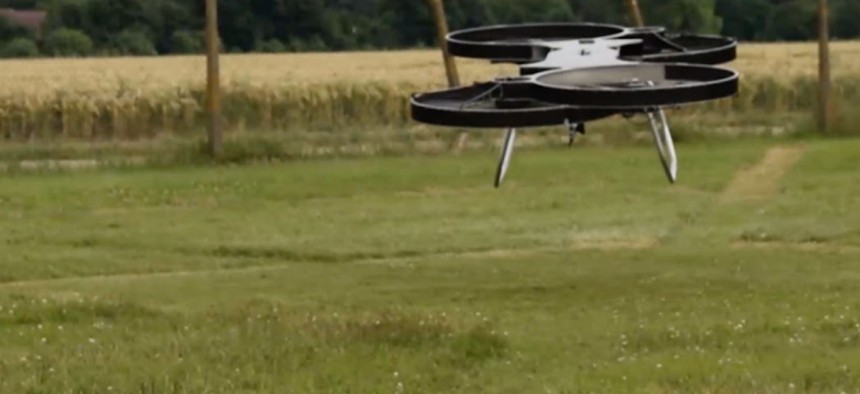Quadcopter resupply drone could give soldiers 'Amazon on the battlefield'
The JTARV, now in prototype, could let soldiers call for supplies and have them delivered in 30 minutes.
Army researchers are developing an unmanned, quadcopter-style vehicle that could perform quick resupply missions over short ranges while flying at low or high altitudes—a service one research chief compared to "Amazon on the battlefield."
Called the Tactical Aerial Resupply Vehicle, or JTARV, the rectangular quadcopter currently is in the prototype stage, but if brought to fruition it would allow soldiers on the battlefield to call for resupplies and have them delivered in about a half hour.
Traditional resupply convoys involve not only supply trucks but clearance vehicles to ensure passage, which requires more vehicles for the mission. "Those need to be coordinated in advance. This negates the need for all that,” Maj. Gen. Cedric T. Wins, commanding general of the Army Research, Development and Engineering Command, said in a release. “Basically what this does is give us speed and agility on the battlefield."
The prototype is about the size of a commercial quadcopter, though differently shaped. The actual JTARV will of course be larger, with a payload capacity of up to 300 pounds, and the ability to fly at low altitudes at 60 mph or faster.
Unmanned resupply missions aren’t all that new in the military, but the types of vehicles and the missions they have performed has varied. Marines in Afghanistan, for instance, made extensive use of the K-MAX unmanned helicopter between 2011 and 2014, when it was decommissioned. The Army and Marines also have tested various track-wheeled ground robots as well as a four-legged robotic pack mule designed to handle tough terrain (although the military has decided that, at the moment, the pack mule to be too loud.)
The JTARV’s design and functionality, including the ability to fly low and respond quickly, could add a new capability that hasn’t been addresses, possibly for supporting small, expeditionary missions.
The Army Research Laboratory began looking into the JTARV concept in 2014, later awarding a contract to Mallory Aeronautics and Survice Engineering to quickly develop a prototype. ARL earlier this ear transferred the project to the Army Armament Research, Development and Engineering Center, with ARL continuing to supply subject matter experts in a number of areas, the Army said. In June of this year, the Marines came in to make it a joint project.
While working to take JATRV from the prototype stage to a full-scale model, researcher also are considering boosting the vehicle’s payload capacity to 800 pounds and extending its range to 125 miles.




